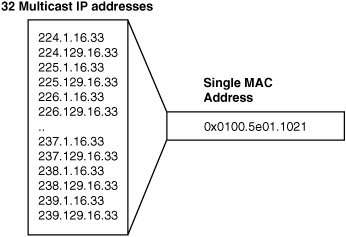Introducing IP Multicast
| With IP Multicast, an application source (S) sends traffic to a group (G) of receivers across your network. You assign the source with a unicast IP address and each group with a single multicast IP address within the registered multicast class D IP address range. When receiving hosts want to receive traffic from a multicast flow G, it is their responsibility to join the group themselves by using Internet Group Management Protocol (IGMP). Multicast routers do not track the IP addresses of the receivers, only whether or not there are any on the local LAN that want to receive the multicast traffic. That is, only those receivers that explicitly join a group receive traffic for that group. You can configure your network for multicast using one of the following technologies.
Note The sources do not signal any information to the network in either ISM or SSM; they simply start sending their traffic to the network when you schedule them to send. Multicast IP addresses fall within the registered class D multicast range 224.0.0.0239.255.255.255. This range conveyed in binary, with the first half octet (4 bits) set to 1110, is
This range gives you 28 total bits of available multicast IP addresses. Table 5-1 gives the uses for the reserved multicast address ranges that pertain to multicast content delivery. Note that many network protocols, such as Open Shortest Path First (OSPF), also rely on multicast addresses to function (for example, 224.0.0.5 and 224.0.0.6) but are not included in Table 5-1.
The multicast IP addresses in Table 5-1 map to the Ethernet MAC addresses that range from 0100.5e00.0000 to 0100.5e7f.ffff. These addresses are owned by the Internet Assigned Numbers Authority (IANA). This range allocates 23 bits of the MAC for a direct copy of the last 23 bits of multicast IP address. For example, in Figure 5-1, the multicast IP 224.1.16.33 maps to 0x0100.5e01.1021. Figure 5-1. A Sample Multicast MAC to Multicast IP Address Mapping Recall that multicast IP addresses use 28 bits of IP address, resulting in the first 5 bits of multicast IP address being lost during the address copy. As a result, you can see in Figure 5-2 that 224.129.16.33 also maps to the MAC address 0x0100.5e01.1021. Figure 5-2. An Illustration of MAC-to-IP Address Overlapping Figure 5-3 shows the 32 multicast IP addresses that map to the MAC address 0x0100.5e01.1020. Figure 5-3. Each Multicast MAC Has 32 Corresponding Multicast IP Addresses | ||||||||||||||||||
EAN: 2147483647
Pages: 178


